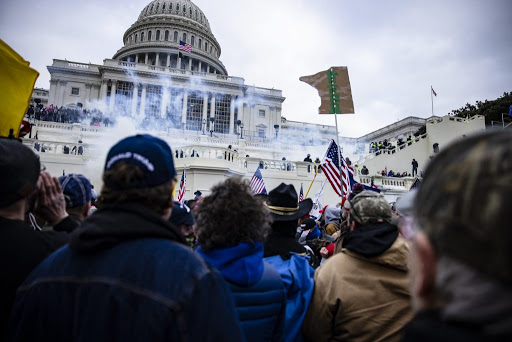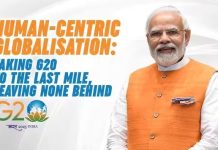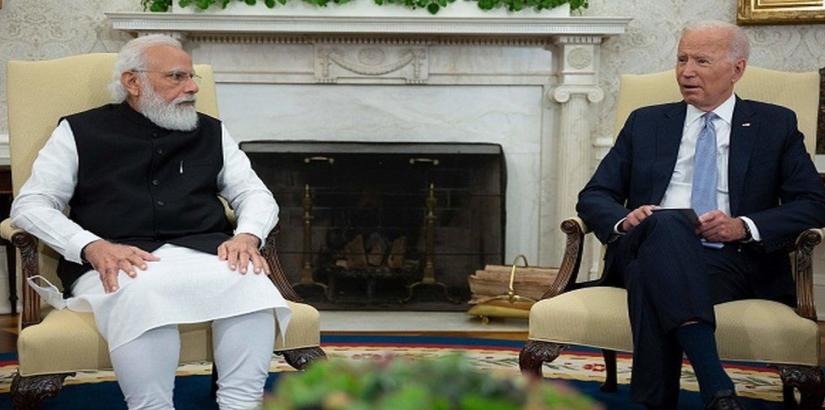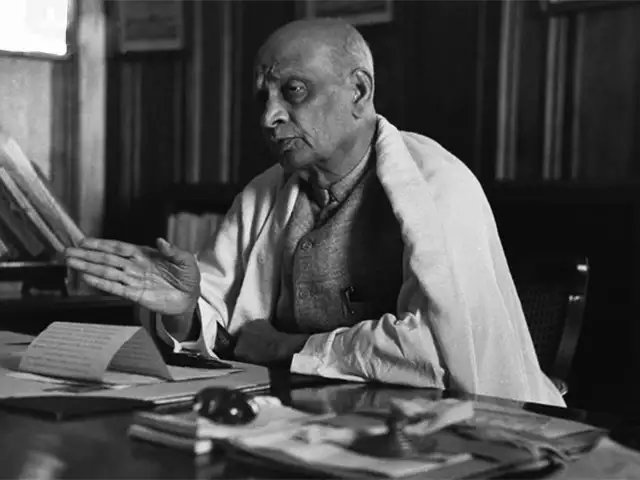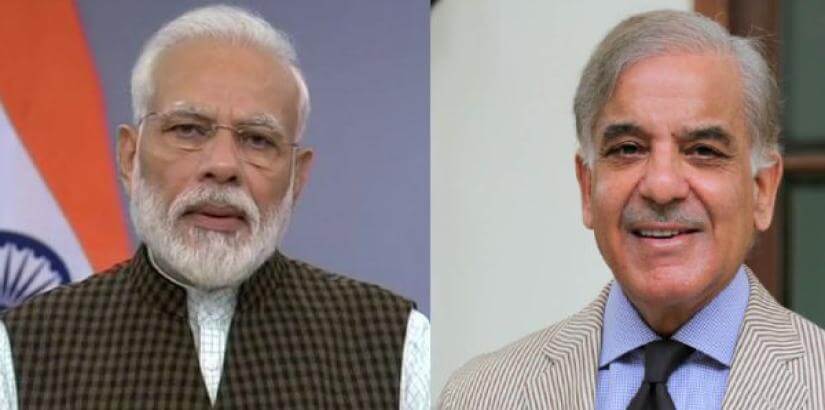The presidential election in the US marked by an unusually confrontationist run up to the polls and an equally bitter post-poll phase of transition, made a wrong sort of history when hundreds of supporters of outgoing President Donald Trump converging on the Capitol Hill in Washington D.C. indulged in violence there on January 6, the day a joint session of the Congress was set to finally certify the victorious candidate. The facts that as many as four protesters lost their lives and an officer of the Capitol Police force succumbed to injuries inflicted by the mob, speak of the seriousness of an event that seemed to the world outside as an unprecedented physical attack on the Parliament of the oldest democracy by a politically driven mob of Republican followers pushed to a height of frenzy by their Presidential nominee himself.
Prime Minister Narendra Modi was amongst the first world leaders to condemn the assault on democracy notwithstanding the fact that India had in his regime enjoyed a deep convergence with Trump on most issues of economy and global security. The point about Washington lawlessness is that it marked the culmination of a long drawn no-holds-barred campaign of the Trump camp that had started turning militant. The event underscores the risk that public exhortations of a certain kind posed, of letting political protests degenerate into blind violence at the hands of emotionally charged followers.
The reported accounts of the composition and behaviour of the rampaging mob within the premises of the Capitol are quiet revealing. Exasperated over the fact that postal ballots had become a prime cause for his defeat, Trump called for protests in D.C. on January 6 and tweeted “be there, will be wild” with Judith Giuliani, his prime supporter, raising the allegation of fraudulent ballot and calling for ‘trial by combat’. In an hour-long speech on January 6, Trump asked his supporters to walk down to the Capitol and “take back our country”. He asked Vice President Mike Pence, who was to chair the joint session, “to come through” and when Pence said he could not block the election result and Trump denounced him on that count, scuffle ensued between the protesters and the Capitol Police.
The marchers who had scaled the walls of the building smashed glass panes, overwhelmed the Police and had a free run of the place. Significantly, the core of the Trump supporters comprised of white nationalists, blue collar workers and those who hated ‘the corrupt elite’ for bartering away the US interests -as was contended by Donald Trump in his ‘America First’ campaign.
A large Confederacy flag was displayed suggestive of a certain mood of hostility reminiscent of the revolt of the Southerners some 150 years ago. Many protesters reportedly wore bullet proof vests and helmets indicating that the march had set off a militant environ and a question did arise as to whether the Capitol Police had read the situation at all and whether reinforcements could not have been called earlier for the protection of the Congress. The case warrants an examination from the angle of failure of law and Order. The Deputy Security Advisor of the White House resigned after the January 6 incident. It may be mentioned that maintenance of internal peace is the prime function of a democratic state.
An analysis of the situation before and after the episode of violence at the Capitol leads to three deductions. First, the electoral campaign of Donald Trump has created an accentuated class division in the US, different from the ideological divide of the right and the left, and led to a new kind of political assertion by the average native White Americans who were convinced Trump had given them priority through the nationalist call of ‘America First’ that implied curbs on moving jobs away from the country and the slogan of ‘Make America Great Again’ that meant propping up the defence might of the US and not letting any other country particularly China take advantage of US in trade and commerce. The racial streak in Trump unravelled by his responses to the act of a white policeman choking an African-American George Floyd to death, in full public view after his arrest at Minneapolis, apparently strengthened this constituency for him.
Secondly, the ‘Black Lives Matter’ movement revived by this incident and the harsh handling of the protests sparked off by it on the specious plea that the agitation was a creation of left extremists and anti-nationals together with the strangely irresponsible approach of Trump to the Covid pandemic evidently led to a silent disapproval of his policy not only by the blacks and many other coloured people but by a large number of sensible Americans too. They found a channel for venting their views in the postal ballots which were unprecedented this time number-wise. Trump might have instinctively sensed it which is why he became so touchy on that part of the electoral exercise. It is the mail-in ballots that materially increased the difference in the vote share of the two candidates and added to the advantage of President-elect Joe Biden.
It is the third reading in all of this which possibly indicates the shape of things to come in American politics, some of it positive but also a lot that should cause concern. Trump stands out from his peers and predecessors for not caring about political finesse and not showing enough understanding of the way a democracy with demographic variations runs. He saw how several protests by his opponents had turned violent in the past but obviously presumed that the marchers to the Capitol would never end up precipitating unprecedented mob violence under the influence of his own militant exhortations. To avoid being put in a corner for accountability for this mob violence by his supporters, Trump hastily condemned it and denounced the law-breakers as being “not Americans”. His remark that “he loved the marchers” did not go unnoticed as an attempt to make the best of a bad bargain. If he is still around for the next election, he might keep the pot boiling for that objective, he would have surely learnt his lessons of democratic politics.
Also, Trump apparently went totally by his wishful thinking. He demonised left extremism but the results seem to show that Americans on their own retained an acute distrust of such an ideology and did not pay attention to the left appeals in this election. Trump ridiculed ‘face -covering’ and ‘social distancing’, the accepted safety precautions against Covid, and tried to demonstrate that he was an intrepid leader. Like he had focused on Islamic Radicalism as an enemy of America last time, he pitched China as the principal adversary this time around. The legacy of ‘Trumpism’ that may haunt the domestic scene in the US in the period ahead is the sharp consolidation of the white nationalists behind him with varying shades of extremism in their thinking against the ‘outsiders’, the corrupt elite and the exploitative set of power holders. Biden as President should be able to promote reconciliation and equality to keep the internal situation turbulence, free for him, it is necessary that he gets time for redefining his foreign policy agenda that the world was watching out for.
India has a keen interest in how Biden Presidency looks upon this country in the context of an extremely close military and defence relationship that had been achieved between US and India during the Trump era as also a convergence of approach between the two countries that was reached on many global issues. It is particularly important that the new President is able to show an understanding of how the Sino-Pak axis posed the biggest threat in the present to India’s national security. The proclivity of Democrats of dealing with India-Pakistan relationship in the past by putting the two countries on the same pedestal , may not have been totally cured in spite of the emergence of Pakistan as a harbourer of Islamic radicals and now as the closest ally of Chinese President Xi Jinping irreversibly bonded to the latter by the CPEC, a project built on the territory of Pakistan occupied Kashmir that had been bartered away by Pakistan to the Communist China.
If India has to become an effective partner of QUAD for the security of Indo-Pacific then the Biden administration has to call China and Pakistan for creating trouble for India on the borders. Trump gave no quarters to either Pakistan or China and Biden, hopefully, will also take due notice of the new development of Pakistan along with Turkey and Malaysia leading a group in the Muslim world, in alignment with Islamic radicals of the Taliban and Al Qaeda at the cost of US interests. The Biden administration has to be careful of the duplicitous role of Pakistan in Afghanistan, Pakistan’s main aim in that country is to acquire a ‘strategic depth’ particularly against India with the help of Taliban. The Modi government will not be willing to put up with any policy approach of the new US regime that hurt India’s economic and security interests. It can be presumed that the two countries are already engaged in reviewing these matters in interactions between diplomatic and security establishments of the two sides.
(The writer is a former Director Intelligence Bureau)

